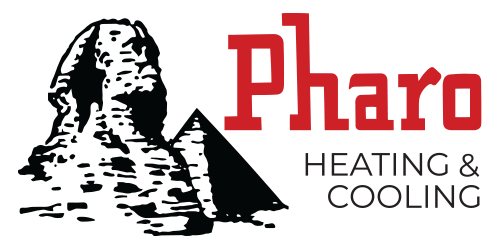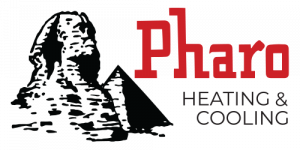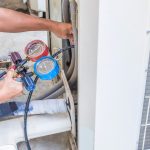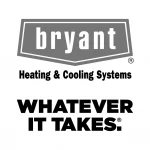2015 Federal Energy Efficiency Tax Credits
This article originally appeared at www.ahrinet.org, to see the article in its entirety please click here.
HVAC Tax Credits
The federal government offers tax credits for some residential HVAC systems and products, and deductions for energy savings in commercial buildings.
Residential HVAC Credits
25D Tax Credits
Under Section 25D of the tax code, qualified geothermal heat pump property expenditures will expire after December 31, 2016. Currently, a taxpayer may claim a credit of 30 percent of total investment for a system that serves a dwelling unit located in the United States that is owned and used as a residence by the taxpayer. Expenditures include labor costs for on-site preparation, assembly or original system installation, and for piping or wiring to interconnect a system to the home.
A geothermal heat pump must meet federal ENERGY STAR criteria that are in effect at the time of the expenditure and includes heating only and cooling only products. Currently, ENERGY STAR criteria for geothermal heat pumps are as follows:
Water-to-Air Closed Loop: EER >= 17.1 and/or COP >= 3.6
Water-to-Air Open Loop: EER>= 21.1 and/or COP>=4.1
Water-to-Water Closed Loop: EER >= 16.1 and/or COP>=3.1
Water-to-Water Open Loop: EER>=20.1 and/or COP>=3.5
Direct Expansion: EER>= 16 and/or COP >= 3.6
Go to either the Water-to-Air and Brine-to-Air Heat Pumps or Direct Geoexchange Heat Pumps directories and select Yes for ‘Eligible for Federal Tax Credit’.
PLEASE NOTE:
Effective January 1, 2017, 25D will apply only towards solar electric property expenditures and solar water heating property expenditures as follows:
- For solar property placed in service after December 31, 2016, and before January 1, 2020, taxpayers can claim a credit of 30 percent.
- For solar property placed in service after December 31, 2019, and before January 1, 2021, taxpayers can claim a credit of 26 percent.
- For solar property placed in service after December 31, 2020, and before January 1, 2022, taxpayers can claim a credit of 22 percent.
For solar water heating property, federal ENERGY STAR criteria requires that:
- At least half of the energy generated by the “qualifying property” must come from the sun.
- The system must be certified by the Solar Rating and Certification Corporation (SRCC) or a comparable entity endorsed by the government of the state in which the property is installed.
- Photovoltaic systems must provide electricity for the residence, and must meet applicable fire and electrical code requirements.
For solar electric property, federal ENERGY STAR criteria requires that:
- Photovoltaic systems must provide electricity for the residence, and must meet applicable fire and electrical code requirements
25C Residential Tax Credits
The information below applies to qualified products installed from January 1, 2015, to December 31, 2016.
Background: On December 18, 2015, President Obama signed H.R. 2029, the Consolidated Appropriations Act 2016, retroactively extending the 25C tax credits, which previously expired at the end of 2014, through December 31, 2016.
Tax Credit Details for Homeowners:
- The efficiency levels required reflect the highest tier of the CEE High-efficiency Specification for Residential HVAC Systems as of January 1, 2009. Please note: Equipment listed in the chart below (except water heaters, which only needs to achieve one of the efficiency specifications) must meet all performance specifications for its category. For example, a tax-credit eligible split central air conditioner must have stated performance ratings of 13 SEER and 16 SEER
- Improvements made in 2015 will be claimed on your 2015 taxes (filed by April 18, 2016); improvements made in 2016 will be claimed on your 2016 taxes.
- The lifetime credit cap of $500 was reinstated. If you have claimed more than $500 in 25C tax credits since January 1, 2006, you are disqualified from any further credits
|
A Manufacturer’s Certification is a signed statement from the manufacturer certifying that the product or component qualifies for the tax credit. The IRS encourages manufacturers to provide these Certifications on their website to facilitate identification of qualified products. Taxpayers must keep a copy of the certification statement for their records, but do not have to submit a copy with their tax return.
How to Obtain the Tax Credit
Eligible contractors need to fill out IRS Form 8908 to get the tax credit. The IRS has provided the following guidance regarding the tax credits for constructing energy efficient new homes available under the Energy Policy Act of 2005:
IRS Notice 2008–35 provides guidance for the credit for building energy efficient homes other than manufactured homes.
Tax Deductions for Commercial Buildings
Under section 179D of IRS code, a tax deduction of up to $1.80 per square foot is available to owners or designers of new or existing commercial buildings that save at least 50 percent of the heating and cooling energy of a building that meets ASHRAE Standard 90.1-2001 for the 2015 tax year, and ASHRAE Standard 90.1-2007 for the 2016 tax year.
Partial deductions of up to $0.60 per square foot can be taken for measures affecting any one of three building systems; the building envelope, lighting, or heating and cooling systems. These tax deductions are available for systems “placed in service” from January 1, 2015 through December 31, 2016.
In early 2012, the IRS released a bulletin that changed the requirement to obtain a partial deduction for upgrades to HVAC and hot water systems. Retroactively effective to March 12, 2012, the energy savings threshold a building must reach to obtain a partial deduction was reduced to 15 percent with respect to a reference building that meets ASHRAE Standard 90.1-2001. Please see IRS Notice 2006-52 for specific computation and building certification requirements that must be satisfied to claim the deduction.
A Manufacturer’s Certification is a signed statement from the manufacturer certifying that the product or component qualifies for the tax credit. The IRS encourages manufacturers to provide these Certifications on their website to facilitate identification of qualified products. Taxpayers must keep a copy of the certification statement for their records, but do not have to submit a copy with their tax return.
How to Obtain the Tax Credit
Eligible contractors need to fill out IRS Form 8908 to get the tax credit. The IRS has provided the following guidance regarding the tax credits for constructing energy efficient new homes available under the Energy Policy Act of 2005:
IRS Notice 2008–35 provides guidance for the credit for building energy efficient homes other than manufactured homes.
Tax Deductions for Commercial Buildings
Under section 179D of IRS code, a tax deduction of up to $1.80 per square foot is available to owners or designers of new or existing commercial buildings that save at least 50 percent of the heating and cooling energy of a building that meets ASHRAE Standard 90.1-2001 for the 2015 tax year, and ASHRAE Standard 90.1-2007 for the 2016 tax year.
Partial deductions of up to $0.60 per square foot can be taken for measures affecting any one of three building systems; the building envelope, lighting, or heating and cooling systems. These tax deductions are available for systems “placed in service” from January 1, 2015 through December 31, 2016.
In early 2012, the IRS released a bulletin that changed the requirement to obtain a partial deduction for upgrades to HVAC and hot water systems. Retroactively effective to March 12, 2012, the energy savings threshold a building must reach to obtain a partial deduction was reduced to 15 percent with respect to a reference building that meets ASHRAE Standard 90.1-2001. Please see IRS Notice 2006-52 for specific computation and building certification requirements that must be satisfied to claim the deduction.










